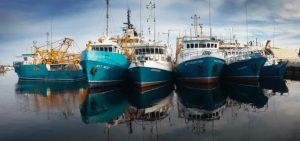How Much Does It Cost To Run A Boat?
When buying a boat, there are many key factors to take into account regarding how much the boat can cost you after the initial purchase. You should always be prepared to pay for maintenance, docking and insurance, which is said to cost around 20% of the price of the actual boat per year. Here are the approximate prices for different aspects of boat maintenance:
- Docking a sailboat – £500 – £6000 depending on location, length and season
- Docking a boat shorter than 30ft – under £500
- Boat maintenance – from £200 per annum
- Antifouling – between £100 and £200 if done yourself
- Petrol price – approximately 151.66 pence per litre
- Painting – between £200 and £400 if done yourself
How Much Does It Cost To Dock A Boat?
Before buying a boat, it is crucial to know roughly how much it is going to cost you to dock it. The average sailboat can cost between £500 and £6000 per annum, with the price depending on a variety of factors. These factors include the boat’s length, the location of where you would like to dock the boat and the season you are docking it in.
It may be harder to find a more budget friendly option whilst trying to dock a boat, however even in popular locations such as Solent it is possible to dock a 30ft boat for under £500. Typically, marinas which are deemed to be in better locations charge much higher rates than those which are a little out of the way.

How Much Does It Cost To Maintain A Boat?
There is often a lot of doubts surround the actual price of maintenance. Prices vary between boats and can also vary between owners who run the same boat based on any problems they may encounter.
Doing work on your boat without the help of a professional can help to significantly reduce any potential maintenance costs as you won’t be charged for an engineer or sailmaker. You can also reduce the maintenance costs through carrying out thorough checks on a regular basis in order to assess any issues. When carrying out checks, they should be performed on the engine and sails, alongside rigging inspections to ensure you are always aware of any signs of damage.
Furthermore, there are tasks which are unavoidable when it comes to running your own boat, such as applying antifouling and replacing sacrificial anodes. The price of these tasks can also vary, as if you reapply your own antifouling this can be as cheap as £100 per 36ft boat, however a professional may charge a minimum of £200 just for labour – and they may charge double that. Many boat owners only reapply their antifouling every few seasons in order to reduce the amount of haul-outs. Haul-outs can also be much cheaper in the summer months when the boatyards are quieter, as during this time the professionals may offer reduced prices.
Boat insurance is also typically cheaper than car insurance, with it being possible to obtain third party cover for under £100 per annum. For bigger boats it is usually more expensive, however it is possible to acquire a fully comprehensive policy for as little as 0.5% of the value of the boat.
One of the hidden costs for running a boat can also be the petrol prices, which is roughly 151.66 pence per litre and varies depending on where it is purchased. Boats which have diesel heaters are able to claim 40% of their fuel at the domestic rate of 169.00 pence per litre.
It is also possible to save money when painting a boat through using a gel coat instead of marine paint. Painting a boat yourself can also save money as you would not be required to pay for labour, however this may also require a haul-out and cost between £200 and £400 just for the paint alone.
How Much Does It Cost To Maintain And Upgrade Boat Systems?
A lot of the equipment required to run about will have a life span which can vary based on a variety of factors including usage. It is always crucial to take into account the funds which may be required to finance the replacement of equipment on a regular basis. Some elements of boat systems, such as the main engine, mast and boom can last up to 20 or 30 years without being replaced. The sails, however, will only last approximately 2-5 years if the boat is being raced, and potentially 10-15 if they are not raced and are for quality cruising. The mast and boom of the boat should last for 20-30 years, whilst the running rigging should be replaced every 10 years.
Teak decks should also last for 10-15 years and potentially more if they are not scrubbed on a regular basis, whilst the liferaft should be replaced every 1 years and the batteries between 4 and 7. There is always variation between the amount of time systems will require before being replaced based on the quality of the components, amount of usage and maintenance schedules.